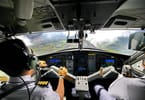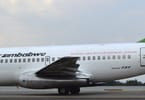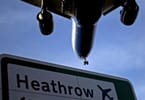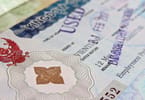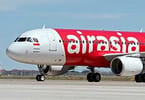US Airways Group Inc. charges the same prices for baggage fees and reservation-change penalties as many of its rivals, but it consistently pulls in more revenue from those charges than most other airlines.
Is it just more aggressive at collections? Not necessarily, but there are some interesting factors behind the heavier fee income.
US Airways is the sixth largest U.S. airline, but ranks No. 3 in total baggage fee revenue and total ancillary revenue, according to recently released Department of Transportation financial data for the first quarter. US Airways reported $120.7 million in revenue from baggage fees. By comparison, larger airlines like UAL Corp.’s United Airlines and Continental Airlines Inc. both collected significantly less – both under $77 million. AMR Corp.’s American reported $128.5 million in baggage fee revenue, but remember — American is a significantly larger airline than US Airways with nearly twice the operating revenue.
Delta Air Lines Inc., the largest airline, was king of baggage fees, as you might expect at $217.8 million collected in the first three months of the year. As a percentage of total operating revenue, however, US Airways still collected more.
In terms of reservation-change fees, US Airways reported $62.7 million for the quarter. That’s a bit more in line – US Airways trails Delta, American and United. But it’s still more than Continental’s $58.9 million, even though Continental is a bigger airline.
US Airways says its fees are “competitive’’ with rival airlines, so it’s not like the airline is simply charging more for checking bags or changing reservations. Instead, a spokesman says the difference is that US Airways flies a higher percentage of domestic service than other big airlines. International passengers often are exempt from checked-baggage fees and tend to make fewer schedule changes than domestic travelers.
“We do a lot more domestic flying proportionally,’’ a spokesman says.
US Airways says 75% of its scheduled flying, measured in available seat-miles, or how far each seat is flown, is domestic. By comparison, 63% of American’s ASMs are on domestic routes, 61% for United, 59% for Delta and 56% for Continental. At Continental, nearly half of the airline’s capacity is in international markets.
As a percent of revenue, Spirit Airlines, which loves to advertise ultra-low fares and then hit customers with charges and fees to bring the cost to travel back up, is the ancillary revenue king. In the first quarter, Spirit’s total ancillary revenue amounted to 21.7% of operating revenue, and the DOT accounting doesn’t include some items airlines charge for, such as seating fees and on-board food sales. The DOT reports do include bag fees, reservation change fees, sales of frequent-flier miles, pet transportation and standby fees.
WHAT TO TAKE AWAY FROM THIS ARTICLE:
- As a percent of revenue, Spirit Airlines, which loves to advertise ultra-low fares and then hit customers with charges and fees to bring the cost to travel back up, is the ancillary revenue king.
- Instead, a spokesman says the difference is that US Airways flies a higher percentage of domestic service than other big airlines.
- charges the same prices for baggage fees and reservation-change penalties as many of its rivals, but it consistently pulls in more revenue from those charges than most other airlines.









